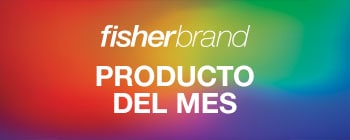Learn More
Invitrogen™ Reactivo de etiquetado de proteínas No-Stain™
A fast, easy to use, covalent protein labeling reagent, applied to a membrane after gel transfer that provides sensitive, linear detection of protein for total protein normalization of western blotting data. The Invitrogen No-Stain Reagent can also be used as a fast, sensitive gel stain for visualization of proteins in a gel.
58.50€ - 178.00€
Especificaciones
| Descripción | El reactivo de etiquetado de proteínas sin tinción forma enlaces covalentes con las cadenas laterales de aminoácidos de lisina en todas las proteínas |
|---|---|
| Membrane Compatibility | Nitrocelulosa, PVDF |
| Línea de productos | Invitrogen™ |
| Para utilizar con (equipo) | Compatible con una amplia gama de generadores de imágenes con fuentes de luz UV o fluorescente (por ejemplo, el generador de imagen iBright). |
| Tiempo de actividad | 10 minutos |
| Código de producto | Marca | N.º de reacciones | Gel Compatibility | Precio | Cantidad y disponibilidad | ||||
|---|---|---|---|---|---|---|---|---|---|
| Código de producto | Marca | N.º de reacciones | Gel Compatibility | Precio | Cantidad y disponibilidad | ||||
|
16351358
|
Invitrogen™
A44717 |
Un kit estándar etiqueta 10 minigeles o 10 membranas de tamaño minigel | Minigeles de proteínas prefundidas, geles de proteínas prefundidas midi |
58.50€
10 reacciones |
Por favor, inicie sesión para comprar este producto. ¿No tiene usuario web? Regístrese hoy mismo. | ||||
|
16341358
|
Invitrogen™
A44449 |
Un kit de estándar puede etiquetar 40 mini geles o 40 membranas de tamaño minigel | Cualquier tipo de gel y química de gel |
178.00€
40 reacciones |
Por favor, inicie sesión para comprar este producto. ¿No tiene usuario web? Regístrese hoy mismo. | ||||
Descripción
The Invitrogen No-Stain Protein Labeling Reagent provides a flexible, accurate, rapid, and reliable method to visualize and normalize proteins in a gel or on a membrane (post-transfer). It forms covalent bonds to proteins in gels or on membranes within 10 minutes, does not require any de-staining steps, and can be instantly visualized using any commonly available imager. No-Stain reagent does not require any particular gels or other reagents and is compatible with gel stains and western workflows.
Instant visualization of proteins in gels
Coomassie and other gel staining and de-staining steps can be extremely time consuming and cumbersome. No-Stain Protein Labeling Reagent forms covalent bonds with the lysine amino acid side chains on all proteins in a gel within 10 minutes. Since lysine is one of the most abundant amino acids, No-Stain reagent enables detection of all proteins in a gel or on a membrane, and the strong signal emission from the covalently bonded reagent provides nanogram-level sensitivity.
- Alternative to traditional gel staining reagents—provides more accurate normalization over a wide range of protein lysate concentrations (1–80 μg)
- Sensitive—lower limit of detection of 20 ng per band
- Specific—forms bonds only with the lysine side chains of proteins. Unbound reagent does not emit, thereby enabling a superior signal-to-noise ratio
- Flexible—no need to change your gels to get stain-free convenience. No-Stain reagent provides stain-free convenience with any gel type (precast or pour-your-own gel)
Achieve the gold standard for quantitative western blotting
Protein normalization is a critical step in obtaining reliable and reproducible quantitative western blotting. Total protein normalization is considered the gold standard for quantitative western blotting. Many leading journals have developed guidelines for submitting western blotting research and select quotes from those guidelines are provided below.
- 'For quantitative comparisons, appropriate reagents, controls and imaging methods with linear signal ranges should be used' – Nature
- 'Record how data were obtained, whether signal intensity was linear with antigen loading, and how protein loading was normalized' – Journal of Biological Chemistry
- 'Normalize signal intensity to total protein loading (assessed by staining membranes for total protein) whenever possible' – Journal of Biological Chemistry
- 'House-keeping proteins should not be used for normalization without evidence that manipulations do not affect expression' – Journal of Biological Chemistry
An accurate loading control should display a linear relationship between signal intensity and sample load in all experimental conditions. The signal intensity obtained from labeling of total proteins on a membrane with No-Stain reagent ensures a linear relationship between signal intensity and sample load (see figure below) in all experimental conditions. Therefore, the use of No-Stain reagent in quantitative western blot applications enables the use of total protein as an ideal loading control.
- Easy-to-use protocol—labeling of proteins within 10 minutes on either nitrocellulose or PVDF membranes
- Rapid visualization using a wide-range of imagers with UV or fluorescence light sources
- Accurate total protein normalization—the broad linear range for protein detection of 1–80 μg enables detection of No-Stain signal along with that of your target protein to achieve accurate total protein normalization
- Sensitive and stable—nanogram level sensitivity with a stable signal that is compatible with downstream immunodetection steps
- Superior analysis—housekeeping proteins are susceptible to signal saturation and other biological variations which are not observed when using No-Stain reagent for total protein normalization
Learn more about No-Stain Protein Labeling Reagent ›
Especificaciones
| El reactivo de etiquetado de proteínas sin tinción forma enlaces covalentes con las cadenas laterales de aminoácidos de lisina en todas las proteínas | |
| Invitrogen™ | |
| 10 minutos | |
| Menos peligroso | |
| Compatible con todos los pasos de inmunodetección posteriores (bloqueo, unión de anticuerpos, detección quimioluminiscente o basada en fluorescencia). |
| Nitrocelulosa, PVDF | |
| Compatible con una amplia gama de generadores de imágenes con fuentes de luz UV o fluorescente (por ejemplo, el generador de imagen iBright). | |
| Hielo seco | |
| Reactivos de etiquetado de proteínas |
Seguridad y manipulación
missing translation for 'shelfLife' : Al menos 2 años a partir de la recepción
Para uso exclusivo en investigación. No apto para uso en procedimientos diagnósticos.
Proporcione sus comentarios sobre el contenido del producto rellenando el siguiente formulario.



